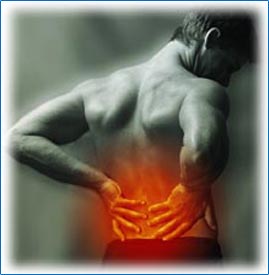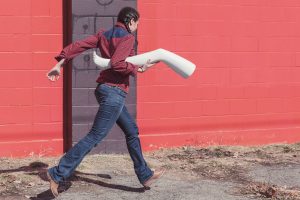
Have you gone to physical therapy, massage therapy, chiropractic, acupuncture, meditation, and everything else under the sun to get rid of your back pain? I know you heard this line a million times from a million different health care providers promising to cure y ou. Also, I know you’ve tried it, and it didn’t work. I’m not guaranteeing anything, but hear me out: has anyone looked at your hips? You may have hip-back pain connection.
ou. Also, I know you’ve tried it, and it didn’t work. I’m not guaranteeing anything, but hear me out: has anyone looked at your hips? You may have hip-back pain connection.
Although we don’t know the exact percentage, a relatively large amount of low back pain originates from the hips. In an earlier blog, I talked about glute med tendinopathy. However, what I didn’t mention was that 20-35% of people with low back pain have a glute medius tendinopathy (a hip muscle injury) (1). Tortolani et al found health providers often misdiagnosed it as lumbar pathology(2). Unfortunately, this incorrect diagnosis leads to incorrect treatment: ONE INCORRECT TREATMENT INCLUDES SURGERY!!
Most importantly, in another study of 344 patients waiting for hip surgery, 168 reported low back pain. Of those, 66% (111) of patients’ back pain resolve with the hip replacement. (3)
So how do you know if you have a hip-back pain connection?
Here are some indicators:
- First, lie down on your back, now turn your feet inwards (toe towards each other). Does one appear to move quite a bit more than the over (15 degrees)?
- Now bring your knee up to your chest. Can it get there? If not, this is another indicator of hip issues
- In addition, do you wake up stiff in the morning, but feel better after getting up and walking around for a while?
- Do you have difficulty putting on your socks in the morning?
- Finally, is squatting difficult for you?
If you said “yes” to more than one of these, you need a hip assessment. You may have a hip-back pain connection. As a result, it could save you from a lot of unneeded treatments or even surgeries for the wrong body part.
1) Bird, P. Oakley, S., Shnier, R., & Kirkham, B. (2001). Prospective evaluation of magnetic resonance imaging and physical examination findings in patients with greater trochanteric pain syndrome. Arthritis and Rheumatism, 44 (9), 2138-2145.
2) Tortolani PJ, Carbone JJ, Quartararo LG. Greater trochanteric pain syndrome in patients referred to orthopedic spine specialists. Spine J 2002;2(4):251-54.
3) Ben-Galim P, Ben Galim T, Rand N, et al. Hip spine syndrome. The effect of total hip replacement on low back pain is severe osteoarthritis of the hip. Spine. 2007; 32 (19): 2099-2012.